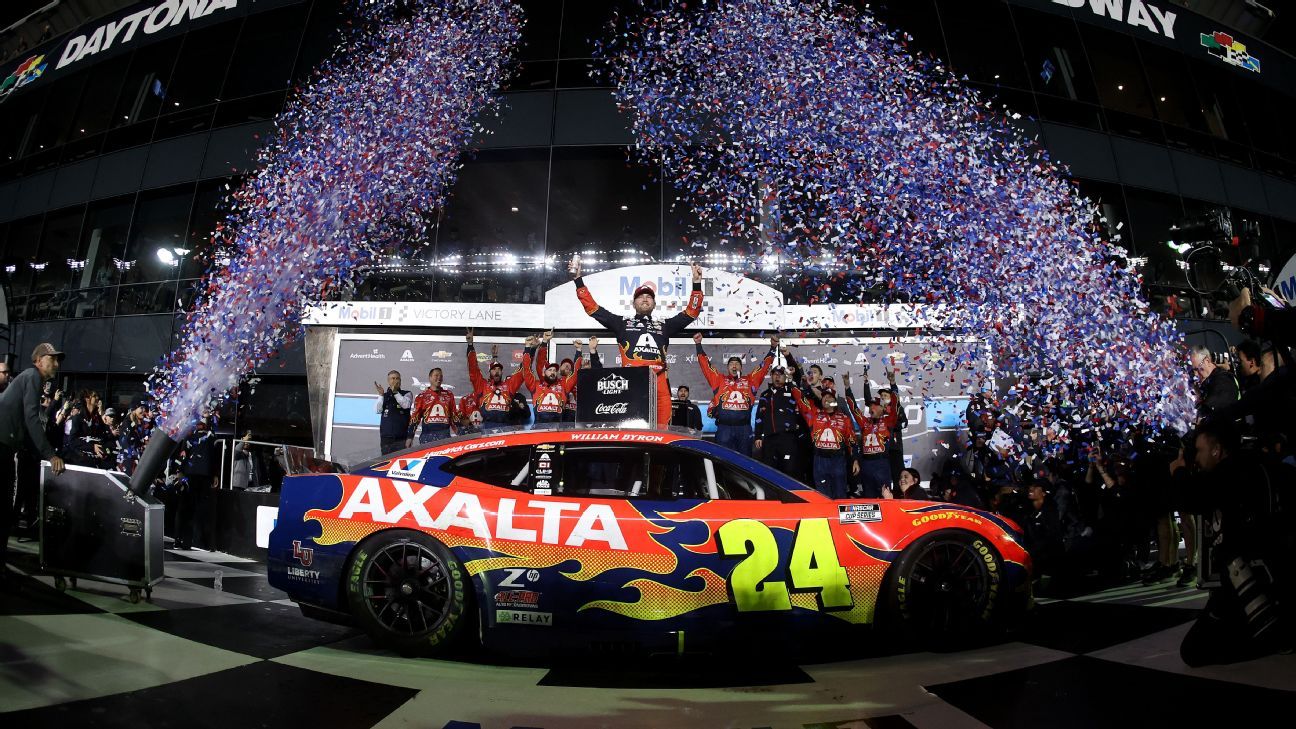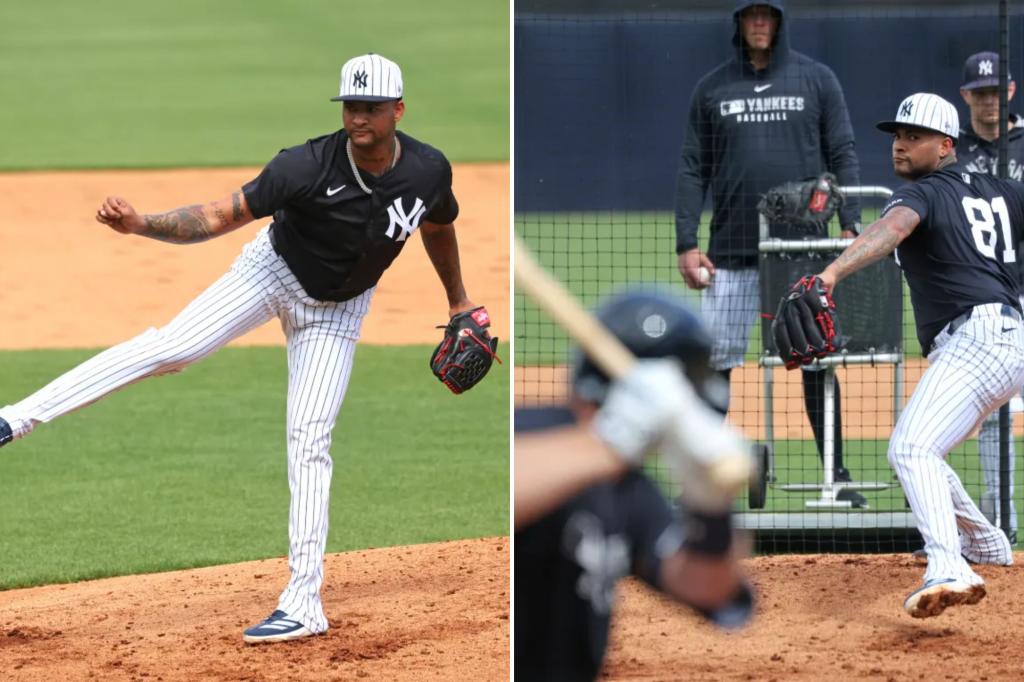
DAYTONA BEACH, Fla. — The Daytona 500 remains a thrilling spectacle for fervent NASCAR enthusiasts and casual bystanders alike, drawing them back year after year. One powerful factor continues to drive the world’s top stock car racers to return, even though most will leave feeling injured, embarrassed, frustrated, or sometimes a combination of all three.
This single element is a tactic that relationship experts frequently highlight as essential for maintaining excitement in any long-standing bond—even a connection between a person and a 2.5-mile superspeedway that has endured for 67 years.
Mystery. Keep the audience on their toes. Just when they think they have it all figured out, throw them a curveball.
“You weren’t expecting that, were you?!” exclaimed William Byron after clinching Victory Lane for the second consecutive year during a cool, humid night at the World Center of Racing. “To be honest, at one point, I didn’t see it coming either.”
It’s okay, Byron—we’re all in this Daytona experience together. Everything we thought we understood about the biggest race in this sport was turned upside down. His achievement of becoming only the fifth driver to win the Daytona 500 consecutively is just a tiny part of a story as long as the race itself.
Consider Tyler Reddick, whose car is co-owned by Michael Jordan, and Denny Hamlin, who was leading late in the race while his team pursues an antitrust lawsuit against NASCAR, finishing in second place.
Jimmie Johnson drove his own car in one of only two races this season, sporting a paint scheme designed by Shaquille O’Neal, and ended up in third.
And let’s not forget Justin Allgaier, who debuted the first Cup Series car fielded by now-team owner Dale Earnhardt Jr. and finished ninth.
“This is why we race!” exclaimed a jubilant Jeff Gordon, a three-time Daytona 500 champion and now vice chairman of Hendrick Motorsports, who made Byron’s No. 24 famous.
Gordon, do you miss the thrill of taking that car into Daytona Victory Lane?
“Absolutely.”
How about the unpredictable chaos of the entire 500 miles?
“Absolutely not.”
Thought the race was slated to start at 2:30 p.m. ET? Surprise! The green flag was set for 1:30. Did you think that was actually when the race would commence? Think again. President Donald Trump flew overhead in Air Force One, quite literally stealing the spotlight from the U.S. Air Force Thunderbirds, leading the 41-car field around the speedway in “The Beast,” the presidential limo.
Thought Chris Evans was Captain America, and Tom Cruise was Jack Reacher? Wrong again. It was grand marshal Anthony Mackie donning a custom leather Captain America/Great American Race jacket, while actor Alan Ritchson, who dwarfs the average race car driver, served as honorary pace car driver.
Did you really believe that a “thin band of rain showers” would only cause a brief yellow flag? Nope! The delay lasted over four hours. This marks the sixth time in the last 14 years that rain has delayed the Daytona 500.
And that wasn’t even the craziest part. The racing action itself was equally bewildering.
Take note of drivers you thought had dropped out only to return—like Hamlin, a three-time Daytona 500 champion, involved in a major early crash that sent sparks flying from his Toyota. Extraordinarily, he made his way back to the top five with less than 10 laps to go, only to encounter another wreck as the race concluded while he was leading.
Additionally, Kyle Busch, still on the quest for his inaugural Daytona 500 win after two decades, suffered an early pit penalty that left him at the back of the pack and later caught in a wreck, yet he fought back into contention as the race progressed.
Despite multiple “Big One” crashes throughout the race’s initial 190 laps, a staggering 29 out of the 41 starters still maintained their position on the lead lap with only 10 circuits remaining.
This is the race that’s spent more than six decades ensuring it wouldn’t evolve into a fuel strategy event, unlike many of the flatter, sweeping ovals that NASCAR visits throughout the year. Yet, thanks to the still-nascent Gen 7 race car, before the race even began — and before each restart — team chiefs were urging their drivers to refuel and crunch the numbers on their miles-per-gallon ratios with under 40 laps to go.
And speaking of the Ford Mustangs being unbeatable—everyone thought they were, right? They were initially. Ford drivers attended their mandatory meeting that morning with Ford Racing leaders, including Edsel Ford II, great-grandson of Henry Ford, who reminded them: “Work together. For the last two laps, do what you will. But until then, collaborate.” That cooperation held until it didn’t. Penske Racing’s Fords — Joey Logano and Ryan Blaney—dominated the early stages of the race, leading a combined 65 laps but soon found themselves involved in the same crash with less than 15 laps remaining.
In the end, it was Toyota, with 11 cars in play, flying under the radar for most of the night. When the race restarted with eight laps left, three Toyotas jostled for position against the lone remaining Penske Ford, Austin Cindric.
Then came the unexpectedly thrilling moment we anticipate every year at the Daytona 500, but with an unusual twist. During a significant crash with five laps to go (a scenario we are accustomed to), a 3,400-pound car performed a wheelie and then flipped onto its roof against the wall (a first-time occurrence). Remarkably, Ryan Preece, who had led at the race’s halfway point—in yet another Ford—emerged unscathed.
And after all that—amidst all the crashes, the fluctuating leaders, and the competition between Toyotas and Fords—there was Byron, who had been relatively quiet since the laps leading up to the rain, driving a Chevy.
“I’ve felt like I’ve been under the radar all week; whenever people discussed favorites, it seemed to match my career path,” Byron remarked with a smile, ready to pop a champagne cork and celebrate with his team. “Perhaps one day people will figure it out.”
Maybe. But this is the Daytona 500, where surprises are always part of the narrative. And it’s also why we keep returning for more.










